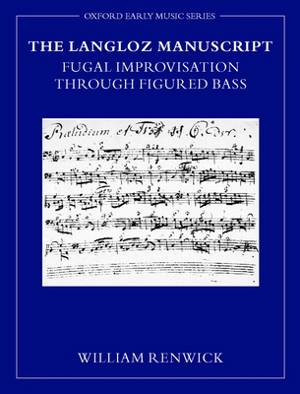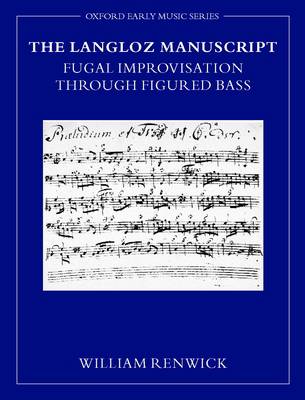
- Afhalen na 1 uur in een winkel met voorraad
- Gratis thuislevering in België vanaf € 30
- Ruim aanbod met 7 miljoen producten
- Afhalen na 1 uur in een winkel met voorraad
- Gratis thuislevering in België vanaf € 30
- Ruim aanbod met 7 miljoen producten
Zoeken
€ 381,95
+ 763 punten
Omschrijving
What sorts of processes were going through the mind of J.S. Bach as he improvised a fugue in three, four, or even six parts? And what sort of training equipped an organist of the early eighteenth century to practice the art of accompaniment and improvisation successfully? The practical method which linked keyboard technique, improvisation, performance, and composition in a continuum was the thoroughbass, the center of the Baroque musicians art. The Langloz Manuscript, originating in the era and proximity of Bach's region of activity, and containing the largest extant collection of figured bass fugues, provides a window into this very process, and demonstrates more clearly than any words can the method by which the art of thoroughbass provided a foundation for extemporised fugue. The present edition is the first publication of this manuscript.
Specificaties
Betrokkenen
- Auteur(s):
- Uitgeverij:
Inhoud
- Aantal bladzijden:
- 208
- Taal:
- Engels
- Reeks:
Eigenschappen
- Productcode (EAN):
- 9780198167297
- Verschijningsdatum:
- 17/05/2001
- Uitvoering:
- Hardcover
- Formaat:
- Genaaid
- Afmetingen:
- 241 mm x 188 mm
- Gewicht:
- 603 g

Alleen bij Standaard Boekhandel
+ 763 punten op je klantenkaart van Standaard Boekhandel
Beoordelingen
We publiceren alleen reviews die voldoen aan de voorwaarden voor reviews. Bekijk onze voorwaarden voor reviews.











